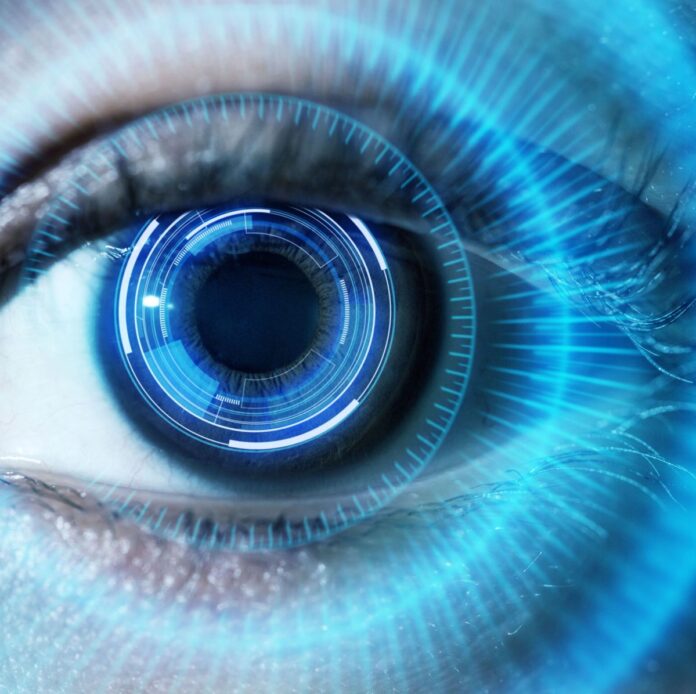Introduction to the Bionic Eye
Step into the future of vision with the incredible world of bionic eyes! Imagine a reality where sight knows no bounds, where technology seamlessly merges with biology to create a groundbreaking innovation. Scientists have unveiled the most powerful bionic eye ever, revolutionizing the way we perceive and interact with the world around us. Join us on this captivating journey as we delve into the evolution, advancements, and potential impact of this cutting-edge technology.
Table of Contents
History of Bionic Eyes and their Evolution
Bionic eyes have a rich history of innovation and evolution. The concept of artificial vision dates back to ancient times, with early attempts involving rudimentary devices aimed at restoring sight to the visually impaired. Over the years, advancements in technology have paved the way for more sophisticated bionic eye prototypes.
In the 1960s, researchers began experimenting with electronic visual prostheses that could bypass damaged optic nerves and stimulate retinal cells directly. These early developments laid the foundation for modern bionic eye technology. As scientists delved deeper into bioengineering and neurology, breakthroughs in materials science and microelectronics revolutionized the field of vision restoration.
The evolution of bionic eyes has been marked by incremental improvements in resolution, sensitivity, and biocompatibility. With each iteration, researchers have strived to enhance not only visual acuity but also user experience and device longevity. The journey from concept to reality has been a testament to human ingenuity and perseverance in overcoming sensory limitations.
Advancements in Bionic Eye Technology
Advancements in bionic eye technology have been rapidly evolving in recent years, pushing the boundaries of what was once thought possible. Researchers and scientists are constantly exploring new ways to enhance the capabilities of these artificial vision devices.
One significant development is the improvement in image resolution and clarity, allowing users to see with greater precision than ever before. This has been made possible through innovations in sensor technology and signal processing algorithms that mimic the functionality of a human eye.
Additionally, advancements in wireless connectivity have enabled seamless integration between bionic eyes and external devices, providing users with enhanced control and accessibility. The ability to wirelessly transmit visual data opens up a world of possibilities for real-time feedback and customization.
Moreover, researchers are also working on enhancing the durability and longevity of bionic eyes, making them more reliable for long-term use. By utilizing materials that are biocompatible and resistant to wear and tear, these devices can offer improved quality of life for individuals suffering from vision loss.
The continuous advancements in bionic eye technology hold promise for revolutionizing how we perceive artificial vision systems in the future.
The Latest Breakthrough: A Powerful Bionic Eye
Imagine a world where the boundaries between technology and biology blur, creating possibilities once only seen in science fiction. Enter the latest breakthrough in bionic eye technology – a powerful innovation that promises to revolutionize how we perceive the world.
This cutting-edge bionic eye is equipped with state-of-the-art sensors and advanced image processing algorithms, allowing for incredibly sharp and detailed vision. It has the ability to restore sight to those who have lost it due to various conditions, offering them a chance at independence and improved quality of life.
With its remarkable capabilities, this powerful bionic eye opens up new horizons for individuals with visual impairments, giving them hope for a brighter future filled with enhanced sensory experiences. The potential impact of this breakthrough extends beyond individual lives, potentially transforming societal perceptions of disability and accessibility.
As researchers continue to push the boundaries of what is possible with bionic eye technology, we can only imagine the incredible advancements that lie ahead in this exciting field.
How the Bionic Eye Works
Imagine a world where sight is no longer limited by the constraints of biology. This extraordinary concept has become a reality with the development of bionic eyes. These innovative devices function by converting visual information into electrical signals that can be interpreted by the brain.
The bionic eye consists of a tiny camera mounted on glasses, which captures images in real-time. The visual data is then transmitted wirelessly to an implant located at the back of the eye. This implant stimulates the remaining healthy retinal cells, bypassing damaged cells and sending signals directly to the optic nerve.
Through this intricate process, individuals who have lost their vision due to conditions such as macular degeneration or retinitis pigmentosa can regain some level of sight. While not yet achieving perfect vision, these advancements in technology bring hope and possibilities for those living with visual impairments.
Potential Benefits and Impact on Society
The development of the most powerful bionic eye brings a wave of potential benefits and societal impacts. Imagine the possibilities for individuals with visual impairments to regain their sight or enhance their vision beyond natural capabilities. This technology could revolutionize how we perceive the world around us, opening up new opportunities for those with disabilities.
The bionic eye has the potential to improve quality of life by allowing individuals to navigate their surroundings more independently and engage in activities they may have never thought possible. From reading text to recognizing faces, this advancement could bridge gaps in communication and social interaction for many people.
Moreover, the impact on society goes beyond just individual experiences. It could lead to advancements in various fields such as healthcare, technology, and accessibility – creating a more inclusive environment for all. The integration of bionic eyes into everyday life may challenge societal norms and perceptions about disability while fostering innovation and empathy.
Ethical Considerations and Concerns
As with any groundbreaking technology, the development of bionic eyes raises important ethical considerations and concerns. One major issue is the potential for unequal access to this advanced vision enhancement. Will only those who can afford it benefit from this innovation, leaving others with visual impairments at a disadvantage? Another aspect to ponder is the impact on personal privacy – how will data collected by these devices be used and protected?
There are also moral dilemmas surrounding the integration of artificial intelligence into bionic eyes. As these devices become more sophisticated, questions arise about autonomy and control over one’s own vision. Additionally, there may be cultural implications to consider when introducing such cutting-edge technology into society.
It is crucial for scientists, policymakers, and ethicists to address these complex issues proactively as bionic eye technology continues to evolve. Balancing progress with ethical responsibility will be vital in shaping a future where everyone can benefit equitably from these remarkable advancements in vision science.
Future Possibilities and Development
The future of bionic eye technology holds immense potential for further development and innovation. As scientists continue to push the boundaries of what is possible, we can expect to see even more advanced and powerful bionic eyes being created.
One exciting possibility is the integration of artificial intelligence into bionic eyes, allowing for enhanced image processing and interpretation. This could lead to improved vision quality and clarity for users, opening up a whole new world of possibilities.
Additionally, researchers are exploring the use of nanotechnology to create smaller and more efficient bionic eye components. This could result in devices that are not only more discreet but also offer greater functionality and versatility.
Furthermore, advancements in wireless technology may enable seamless connectivity between bionic eyes and other devices, enhancing user experience and convenience. Imagine a future where individuals with visual impairments can effortlessly interact with their surroundings through their bionic eyes.
The future looks incredibly bright for bionic eye technology, promising groundbreaking developments that will continue to revolutionize the field of vision enhancement.
Conclusion
In the ever-evolving field of bionic eye technology, scientists have achieved a groundbreaking milestone with the creation of the most powerful bionic eye to date. This innovation holds immense promise in transforming the lives of visually impaired individuals and opening up new possibilities for enhanced vision.
With advancements like these, we are witnessing a remarkable fusion of cutting-edge technology and medical science that has the potential to revolutionize how we perceive blindness and visual impairments. As research continues to push boundaries and explore new frontiers, it is clear that the future holds even more exciting developments in store for bionic eyes.
As society embraces these transformative technologies, it is crucial to consider not just their benefits but also their ethical implications. Striking a balance between progress and responsibility will be key in ensuring that bionic eyes are used ethically and equitably across diverse populations.
The journey towards creating a powerful bionic eye may have been long and challenging, but its impact on individuals’ lives is immeasurable. As we look ahead to what lies beyond this latest breakthrough, one thing remains certain – the future of vision is brighter than ever before.



